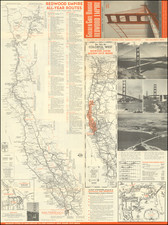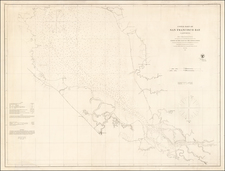Striking colored photo-panorama of the grounds of the Panama–Pacific International Exposition of 1915.
Oriented from the south and looking toward Angel Island and Alcatraz island in San Francisco Bay, the view provides a concise array of the buildings constructed for the PPIE.
The Panama–Pacific International Exposition of 1915 was a significant event in San Francisco's history, serving dual purposes of celebrating the completion of the Panama Canal and marking the city's resurgence after the devastating 1906 earthquake. Spanning 636 acres along San Francisco's northern shoreline, the fair featured a plethora of exhibits, architectural marvels, and cultural representations, showcasing technological advances and the spirit of a new America.
The exposition was not merely an exhibition of technological wonders but also an elaborate stage for cultural representation. Native American culture was an area of focus. Attractions such as James Earle Fraser's statue "The End of the Trail" articulated prevailing notions of Native Americans as a "vanishing race," although the reality, as noted by scholars, was considerably different. Native Americans actively participated in the fair as visitors, performers, and workers.
Gender roles and women's rights were also foregrounded during the exposition. A dedicated Women's Board allowed women to participate in the organization of the event, although critiques emerged regarding the fair's reinforcement of traditional gender roles. The "New Woman," emblematic of progressive ideals, became a focal point in the fair's marketing campaigns, linking gender to broader narratives of modernity and progress.
Architecturally, the exposition was a tour de force, featuring an array of buildings designed to awe the visitors. The Tower of Jewels, a 435-foot edifice adorned with over 100,000 cut glass "Novagems," served as the focal point of the fairgrounds. Other significant structures included the Palace of Fine Arts, the only building from the exposition that still exists today, and the Palace of Machinery, which was the largest hall built for the event. Various "Palaces" dedicated to themes like Food Products, Agriculture, Liberal Arts, and Transportation flanked the central courts, symbolizing an age of abundant possibilities.
Despite its grandiosity, nearly all buildings of the Panama–Pacific International Exposition were temporary, designed to be dismantled after the event. Today, a few structures remain, either repurposed or relocated, serving as lasting reminders of a transformative moment in American history. The exposition's influence extended beyond architecture and exhibitions; it left an indelible mark on American culture, commerce, and international relations, encapsulating the ambitions and contradictions of a nation on the brink of modernity.












![[Illustrated San Francisco Advertising Map] Map Business Portion San Francisco Showing Location of Hotels, Theaters, Etc. Etc.](https://storage.googleapis.com/raremaps/img/small/50207.jpg)

![[ First Printed Map of San Francisco Bay ] Plan Du Port De St. Francois Situe sur la cote de la Californie . . .](https://storage.googleapis.com/raremaps/img/small/90983.jpg)
![[ San Francisco to Napa & Sonoma ] Chart of the Bay of San Pablo Straits of Carquines and part of the Bay of San Francisco California . . . 1850](https://storage.googleapis.com/raremaps/img/small/100267.jpg)
![[ San Francisco Bay, North Coast & Monterey Bay Region ] Amer. Sep. No. 46 Nouvelle Californie](https://storage.googleapis.com/raremaps/img/small/98751.jpg)